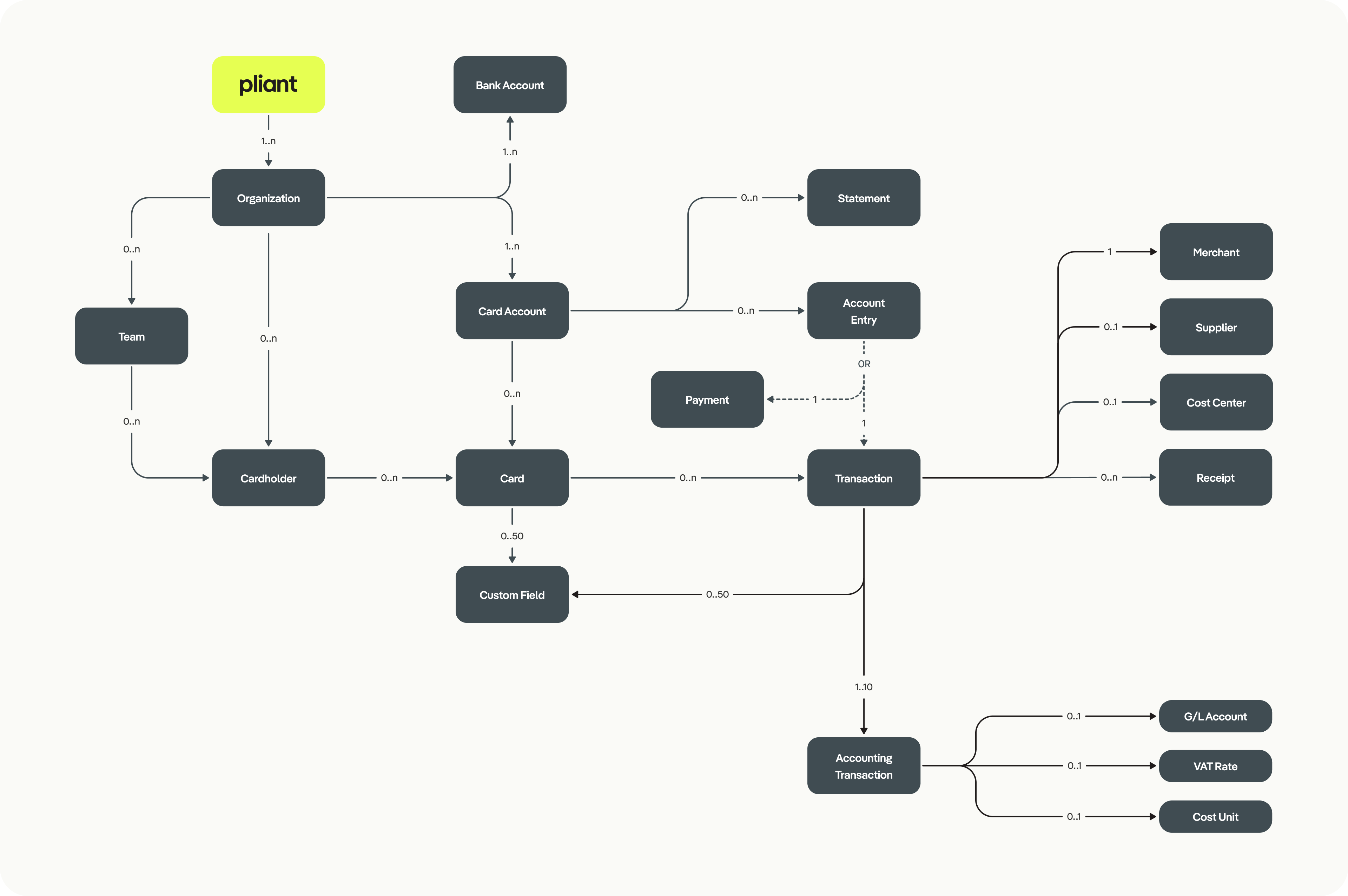Business Entities
Logical EntitiesPliant’s Customer API endpoints are organized around key data object classes within the Pliant platform. You can learn more about these structures on this page.
Our API design closely reflects these data objects. Each entity has one or more REST endpoints to read or update data. Additionally, we offer callback subscription endpoints that allow you to register a URL to receive notifications about relevant events.
Entity Relations

Description of Entities
Entity | Description |
|---|---|
Organization | Essentially your company. This is the entity that has a contractual relationship with Pliant. An organization must be a company and has at least one cardholder. |
Team | Organizations may (but don't have to) have one or more teams. Teams help group cardholders logically (e.g., by department or hierarchy). For accounting purposes, a cost center number can be assigned to each team. |
Cardholder | Typically the employees of your organization. Cardholders can have multiple roles (e.g., Admin, Owner, Accountant, Cardholder) and belong to multiple organizations. A cardholder is usually the person using the card or managing transactions. |
Card | We offer both physical and virtual credit cards, each assigned to one cardholder. Cards have individual spending limits tied to the organization’s overall limit.
|
Transaction | Transactions usually reflect payments made with our cards. Special cases include refunds, chargebacks, and card checks. The transaction object contains all accounting-relevant data.
|
Receipt | Cardholders typically upload receipts to transactions as proof of payment. These can be replaced as long as the transaction is in a mutable state. |
Payment | Payments can be:
|
Statement | Generated based on the billing period, a statement is similar to a credit card statement — summarizing all activity for the cards used during that time. |
Updated 4 months ago
